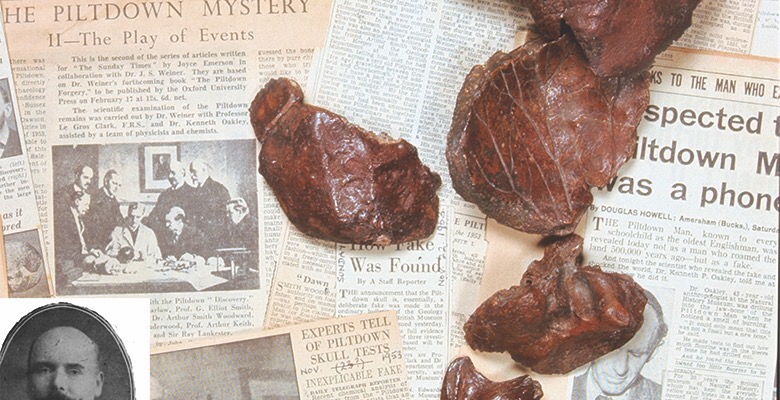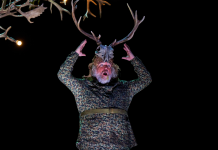A new analysis of the famous Piltdown Man forgeries, points the finger of suspicion even more firmly at their discoverer, Charles Dawson.
The Piltdown Man scandal is arguably the greatest scientific fraud ever perpetrated in the UK, with fake fossils being claimed as evidence of our earliest ancestor.
Published 100 years on from Dawson’s death, new research reveals that the forgeries were created using a limited number of specimens that were all constructed using a consistent method, suggesting the perpetrator acted alone.
It is highly likely that an orang-utan specimen and at least two human skeletons were used to create the fakes, which are still kept at the Natural History Museum.
Between 1912 and 1914 Museum palaeontologist Arthur Smith Woodward and the amateur antiquarian Charles Dawson announced the discovery of fossils from Piltdown in Sussex. These were supposedly a new evolutionary link between apes and humans. They indicated a species with both an ape-like jaw and a large braincase like a modern human. Before he died in 1916, Dawson claimed to have discovered further evidence at a second site.
The forgeries helped misdirect the study of anthropology for decades. While doubts were raised from the start, it took 40 years for the scientific community to recognise that the remains had been altered to seem ancient and had been planted in the sites.
The new research, published in Royal Society Open Science, was undertaken by a multi-disciplinary team led by Liverpool John Moores University working with other institutions in London, Cambridge and Canterbury. They used the latest scientific methods to test the Piltdown specimens to uncover more about how the forgery was done.
DNA analyses show that both the canine from the first Piltdown site and the molar from the second site probably came from one orang-utan, related most closely to orang-utans now occupying south-west Sarawak (Borneo). In addition, the shape and form of the molar from the second Piltdown site was almost certainly from the other side of the jawbone planted in the first site.
Dr Isabelle De Groote from LJMU’s Department for Natural Sciences and Psychology, and lead author on the paper, thinks the results point to a clear conclusion: “Although multiple individuals have been accused of producing the fake fossils, our analyses to understand the modus operandi show consistency between all the different specimens and on both sites. It is clear from our analysis that this work was likely all carried out by one forger: Charles Dawson.”
Linus Girdland Flink, also from LJMU, said: “The ancient DNA work was very exciting and I’m happy that we managed to contribute new insights to the Piltdown forgery. Most of the Piltdown specimens showed rather poor DNA preservation so I was happily surprised that the Piltdown I canine and Piltdown II molar yielded solid results. The combined results of our study is a nice illustration of how these techniques can shed new light on old questions.”
Chris Stringer, human origins expert at the National History Museum, commented: “Our work shows that a century on, we can add a new chapter to the Piltdown story through new investigative techniques. For example we found surprising evidence that the forger had even removed the molars in order to modify them, and had then replaced them in the jawbone.”
3D X-ray imaging (Micro-CT scans) show that many of the bones and a tooth were filled with Piltdown gravel and the openings plugged with small pebbles. Holes in the skull bones were filled with dental putty, which was also used to re-set the teeth in the jaw and to reconstruct one of the teeth that fell apart while it was being ground down.







